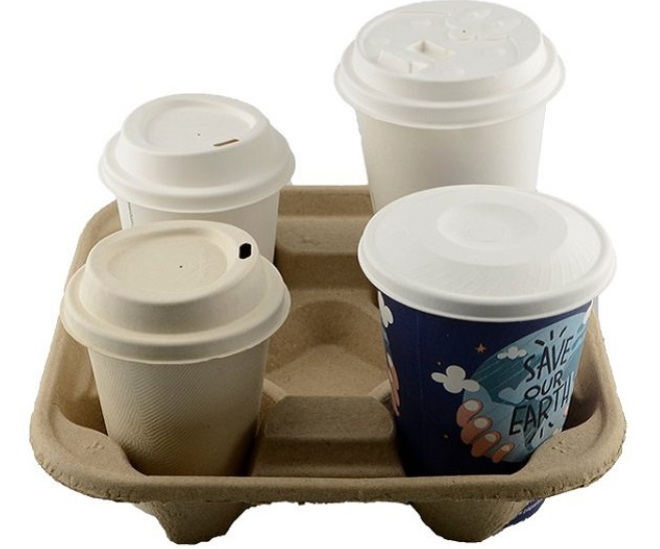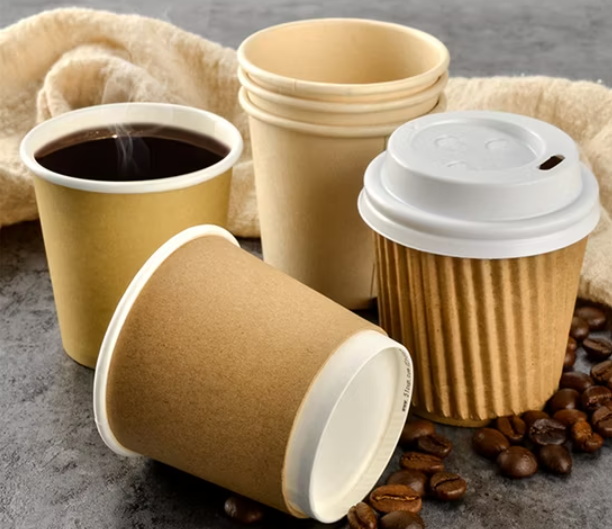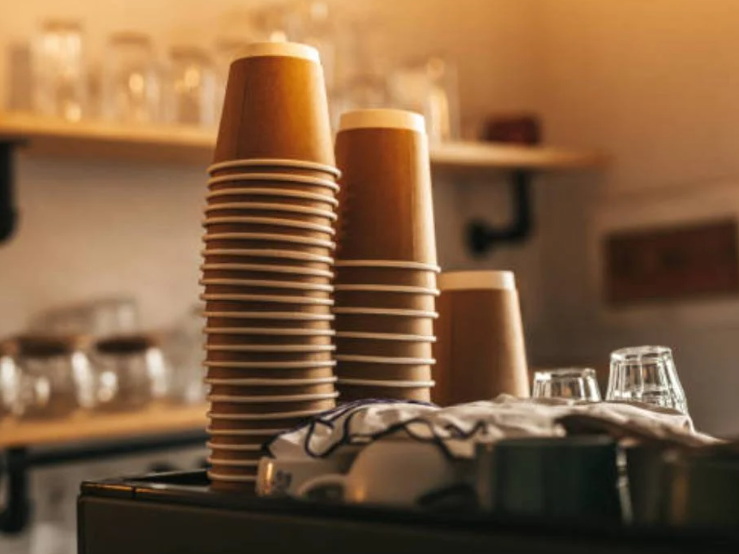
Content Menu
● Introduction to Eco-Friendly Disposable Cup Stands
>> Features of Eco-Friendly Disposable Cup Stands
● Benefits of Using Eco-Friendly Disposable Cup Stands
>> Environmental Benefits
>> Economic Benefits
>> Social Benefits
● Types of Eco-Friendly Disposable Cup Stands
>> Compostable Cup Holders
>> Recyclable Cup Stands
>> Biodegradable Cup Stands
● Challenges and Future Developments
>> Innovations in Design
>> Market Trends
>> Case Studies
● Implementation Strategies
● Conclusion
● Frequently Asked Questions
>> 1. What materials are eco-friendly disposable cup stands made of?
>> 2. How do eco-friendly cup stands reduce waste?
>> 3. Are eco-friendly disposable cup stands more expensive than traditional ones?
>> 4. Can eco-friendly cup stands be customized?
>> 5. Where can I purchase eco-friendly disposable cup stands?
In recent years, the world has seen a significant shift towards sustainability, with many industries focusing on reducing waste and promoting eco-friendly practices. One area that has gained attention is the use of disposable cup stands, particularly in the food and beverage industry. This article explores the availability and benefits of eco-friendly disposable cup stands, highlighting their features, advantages, and how they contribute to a more sustainable future.

Introduction to Eco-Friendly Disposable Cup Stands
Eco-friendly disposable cup stands are designed to minimize environmental impact by using materials that are recyclable, biodegradable, or compostable. These stands are ideal for events, cafes, and food stalls where convenience and sustainability are key. They offer a practical solution for businesses looking to reduce their plastic footprint while maintaining the convenience that disposable products provide.
Features of Eco-Friendly Disposable Cup Stands
1. Materials: Made from materials like recycled cardboard, bioplastics, or plant-based biodegradable materials, these stands reduce the reliance on single-use plastics.
2. Design: They often feature innovative designs that are both functional and visually appealing, making them suitable for various settings.
3. Portability: Lightweight and compact, they are easy to transport and set up, which is particularly beneficial for outdoor events or temporary installations.
Benefits of Using Eco-Friendly Disposable Cup Stands
Environmental Benefits
- Reduced Waste: By using biodegradable or compostable materials, these stands significantly reduce the amount of plastic waste that ends up in landfills and oceans. This reduction in plastic waste helps mitigate the environmental impacts associated with plastic pollution, such as marine life harm and litter accumulation.
- Carbon Footprint: The production process often involves lower carbon emissions compared to traditional plastic manufacturing. This is due to the use of renewable resources and more efficient production methods.
Economic Benefits
- Cost-Effective: While initially more expensive, eco-friendly options can lead to cost savings in the long run through reduced waste disposal costs and potential tax incentives for sustainable practices. Many governments offer financial benefits to businesses that adopt environmentally friendly practices.
- Market Appeal: Consumers increasingly prefer businesses that adopt eco-friendly practices, which can enhance brand reputation and attract environmentally conscious customers. This shift in consumer preference can lead to increased sales and customer loyalty.
Social Benefits
- Awareness and Education: The use of eco-friendly cup stands can raise awareness about sustainability and encourage consumers to make environmentally responsible choices. By promoting sustainable practices, businesses can contribute to a broader cultural shift towards environmental stewardship.
- Community Engagement: Businesses that adopt sustainable practices often see increased community support and loyalty. This can lead to stronger community relationships and a positive social impact.

Types of Eco-Friendly Disposable Cup Stands
Compostable Cup Holders
These are made from materials that can decompose naturally, such as plant-based bioplastics or compostable cardboard. They are ideal for events where waste management infrastructure is available to handle composting. Composting these materials helps return nutrients to the soil, reducing the need for synthetic fertilizers and promoting sustainable agriculture.
Recyclable Cup Stands
Made from recyclable materials like cardboard or paper pulp, these stands can be recycled at the end of their life cycle, reducing waste and conserving natural resources. Recycling helps to close the loop on material use, minimizing the extraction of raw materials and reducing landfill waste.
Biodegradable Cup Stands
These stands break down naturally in the environment, reducing plastic pollution. However, they may require specific conditions to decompose effectively, such as exposure to sunlight or oxygen. Biodegradable materials are often used in situations where recycling infrastructure is limited.
Challenges and Future Developments
Despite the benefits, there are challenges associated with eco-friendly disposable cup stands, such as higher initial costs and the need for proper waste management infrastructure. However, as technology advances and consumer demand increases, these stands are becoming more affordable and accessible.
Innovations in Design
Designers are continually innovating, creating stands that not only reduce waste but also provide additional functionalities like insulation and portability. These innovations can enhance user experience while maintaining sustainability. For example, some stands are designed with built-in cup sleeves to keep drinks warm or cool, reducing the need for additional packaging materials.
Market Trends
The market for eco-friendly disposable cup stands is growing rapidly, driven by consumer demand for sustainable products and government regulations aimed at reducing plastic waste. This trend is expected to continue as more businesses recognize the benefits of adopting environmentally friendly practices.
Case Studies
Several companies have successfully integrated eco-friendly disposable cup stands into their operations. For instance, a popular coffee chain switched to compostable cup holders for their outdoor events, resulting in a significant reduction in plastic waste and an increase in customer satisfaction.
Implementation Strategies
Implementing eco-friendly disposable cup stands requires a strategic approach:
1. Assess Current Practices: Evaluate existing packaging and waste management practices to identify areas for improvement.
2. Choose the Right Material: Select materials that align with your business's sustainability goals and waste management capabilities.
3. Educate Staff and Customers: Train staff on the benefits and proper use of eco-friendly stands, and inform customers about the sustainable practices being implemented.
4. Monitor and Adjust: Continuously monitor the effectiveness of the new stands and make adjustments as needed to optimize their use.
Conclusion
Eco-friendly disposable cup stands offer a sustainable solution for the food and beverage industry, providing a convenient way to reduce plastic waste while enhancing brand reputation and customer satisfaction. As consumers become more environmentally conscious, the demand for these stands is likely to increase, driving further innovation and accessibility.

Frequently Asked Questions
1. What materials are eco-friendly disposable cup stands made of?
Eco-friendly disposable cup stands are typically made from materials that are recyclable, biodegradable, or compostable, such as recycled cardboard, plant-based bioplastics, or paper pulp.
2. How do eco-friendly cup stands reduce waste?
They reduce waste by using materials that can be recycled, composted, or biodegrade naturally, minimizing the amount of plastic that ends up in landfills and oceans.
3. Are eco-friendly disposable cup stands more expensive than traditional ones?
Initially, eco-friendly options might be more expensive. However, they can lead to long-term cost savings through reduced waste disposal costs and potential tax incentives.
4. Can eco-friendly cup stands be customized?
Yes, many manufacturers offer customization services, allowing businesses to tailor the design and branding of their cup stands to suit their needs.
5. Where can I purchase eco-friendly disposable cup stands?
Eco-friendly disposable cup stands can be purchased from various suppliers, including online platforms like Alibaba and specialized packaging companies like Simply Eco Packaging.

















